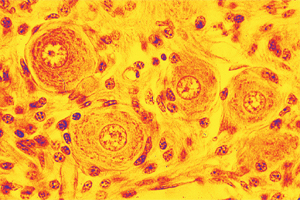The autonomous nervous system (ANS) is mainly related to keeping-up automatic functions, functions the brain has no voluntary control over. These include organs like the heart, lungs, intestines, bladder, sex organs and blood vessels. It is also in charge of internal homeostasis (stability of the body).
Just like the somatic nervous system, the ANS has sensory (afferent) neurons and motor (efferent) neurons. This way, sensory impulses are originated at the receptors located in the viscera and they travel to the central nervous system, where they are integrated through different tiered connection neurons, to then head on towards the rest of the body through the motor pathways. The motor pathways are made up by two kinds of neurons:
– Preganglionic neuron: the cell bodies of these neurons are located at several points of grey matter along the spinal cord and at the motor centers of cranial nerves III, VII, IX and X. The axons of these neurons produce synapse on the cell bodies belonging to postganglionic neurons.
– Postganglionic neurons: these neurons form ganglia outside of the CNS, where they receive nerve impulses from the axons of preganglionic neurons.
The autonomous nervous system has two divisions: the sympathetic and the parasympathetic. Both are made up of preganglionic neurons that are born in the central nervous system (CNS) and of postganglionic neurons found in the peripheral nervous system (PNS).








